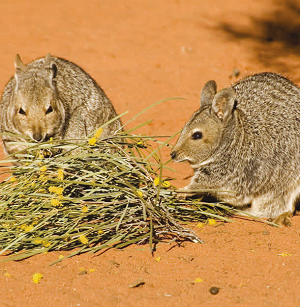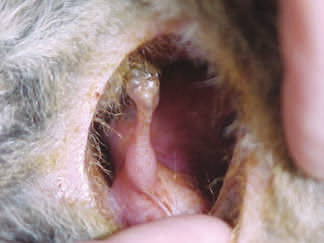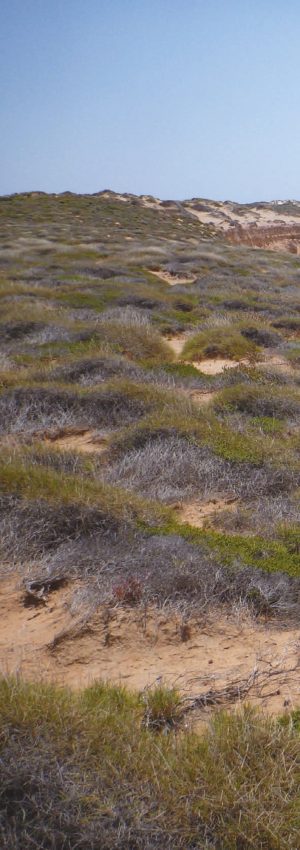Banded hare-wallaby
Banded hare-wallaby
Lagostrophus fasciatus
Description

| Head-body 400-450mm |
Tail 320mm |
Weight 1.6-3kg |
…the striped kangaroo, the smallest and most beautiful among the species… is how naturalist François Péron described the banded harewallaby in 1801. The grey fur of this wallaby’s back and rump is striped with dark bands while the underbelly is greyish-white.
Diet and habitat

Banded hare-wallabies eat mainly shrubs, and to a lesser extent grasses. During the day they shelter and form runs under dense shrubs in spinifex grasslands and sand dunes. These hare-wallabies are territorial and male-male interactions can be aggressive. Relations among females and between juveniles and adults are peaceful.
Breeding

| Gestation 6 months |
No. young 1 |
Weaned 9 months |
Banded hare-wallabies usually breed in their second year, with births late in summer. Joeys spend about six months in the pouch. As with other macropods, the female can delay development of a fertilised egg, reactivating an embryo when a joey leaves her pouch (embryonic diapause).
Distribution

Banded hare-wallabies once ranged across southern Australia. The only extant wild populations are on Bernier and Dorre islands, although they have been successfully reintroduced to Faure Island. They will also be introduced to Dirk Hartog Island as part of the Return to 1616 ecological restoration project.
Status

The mainland subspecies of this hare -wallaby is extinct, leaving only one of two subspecies.
Fact sheet
SHARK BAY
World Heritage



